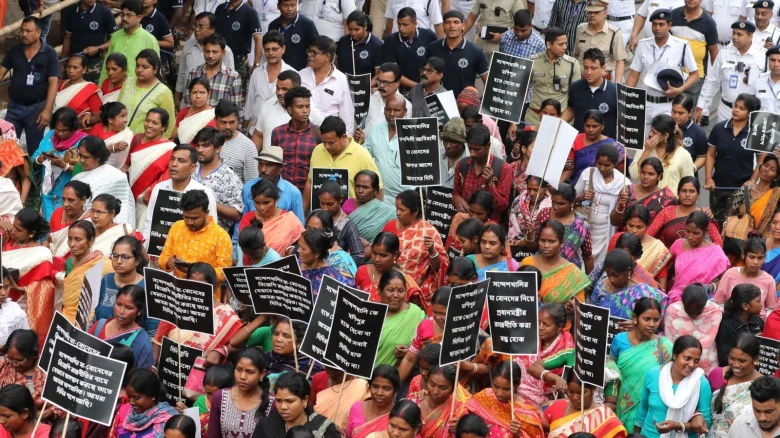The march by the State Coordination Committee stands as a testament to the enduring legacy of public expression...
Digital Desk: In a recent order, the Calcutta High Court reaffirmed the integral role of public rallies and meetings in Bengal's cultural fabric. Echoing the sentiment that such gatherings are as indispensable to Bengal as its culinary delights like 'mishti doi,' 'luchi,' and 'alu posto,' the court allowed a march by a state government employees’ organization.
The court's decision stemmed from a single bench order permitting the State Coordination Committee, representing a faction of West Bengal government employees, to conduct a rally at the state secretariat Nabanna. Chief Justice T S Sivagnanam, presiding over a division bench, emphasized the intrinsic connection between public demonstrations and Bengal's cultural ethos.
Acknowledging the historical significance of rallies and protests in Bengal, the court also highlighted the need for organizers to find alternative means of expression, given the inconvenience caused to the public by rallies on arterial roads.
Despite opposition from the West Bengal government, citing prohibitory orders and congested routes, the court upheld the fundamental right to peaceful demonstration. Senior counsel Bikash Ranjan Bhattacharya argued that such protests are essential avenues for expressing grievances, especially regarding issues like the implementation of dearness allowance.
The court's directive to maintain order during the rally underscores the importance of balancing the right to protest with public convenience. By emphasizing the need for peaceful conduct and minimal disruption, the court aimed to ensure that demonstrations served their intended purpose without unduly inconveniencing the public.
In navigating the delicate balance between tradition and modernity, Bengal continues to uphold its rich cultural heritage while adapting to the evolving dynamics of governance and dissent. The march by the State Coordination Committee stands as a testament to the enduring legacy of public expression in Bengal's vibrant tapestry of culture and democracy.

Leave A Comment